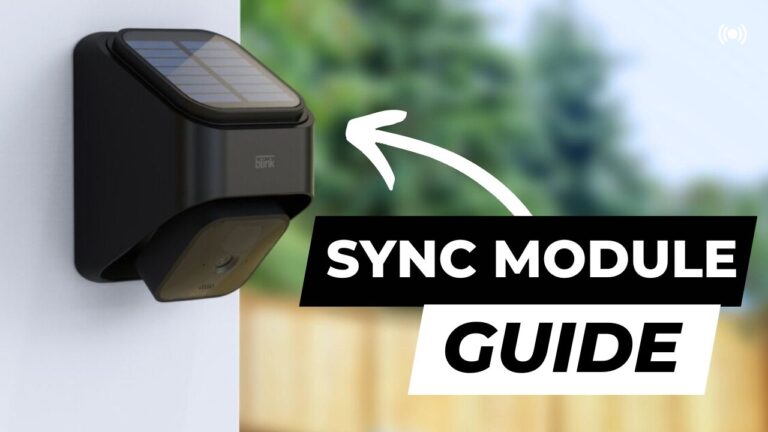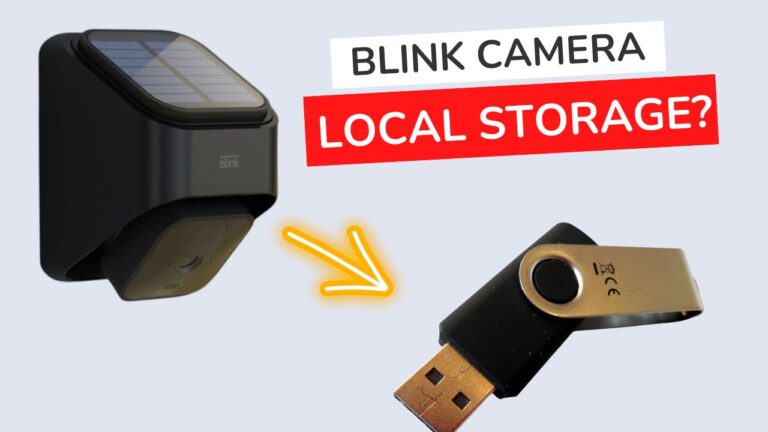Blink Camera Battery Replacement: How To Do It?
Blink has transformed home and personal security with a vast selection of security cameras since 2009.
Right now, you can purchase one for just $99.99 from any online retailer like Amazon, and it serves as your assistant, watching over anything for you and providing your real-time data.
What happens when your Blink Camera’s batteries run out?
Although the device comes with a power plug, it’s powered by lithium-based AA batteries. They work with standard AC power to provide unparalleled security for your home.
So, if the batteries in your device die, you might still be able to use it for a short time with only the power plug, but you will not be able to use it outside. Thus, changing the batteries is very important.
Today, we will give you a proper walkthrough on changing the batteries on your Blink Camera and a few dos and don’ts. Thus, without further adieu, let us begin.

How do I know if my Blink Camera’s battery is dead?
It’s straightforward to find out when your device is out of power.
When the camera’s battery is about to die out, it will emit continuous pulses of red light after the initial blue record light you get when it’s powered on. All you have to do is look at the red light carefully.
Suppose the red light is blinking, fast and uninterrupted; it’s time for new batteries. If the light is not blinking fast, then that can be due to low signal strength, motion detection, etc.
Use the app to check battery strength.
Another great way to know if your device is running low on battery is by checking the battery status from the Blink app.
To do so:
- Open the Blink app on your smartphone and go to the camera settings icon, located to the right of the “running man” icon.
- In the settings option, look for “Monitoring.”
- Under monitoring, you will find the “Battery” option.
- You can use this to determine whether your batteries are “OK” or “NEED REPLACEMENT.”
- If the battery tab shows “OK, ” there’s nothing to worry about. If not, then get the batteries replaced ASAP.
How to Replace the Blink Camera’s batteries
Changing batteries in a blink camera is straightforward. You can do it using the tool provided with the device. For newer models, you can do the task with just your hands.
To replace the batteries:
- Take the device and look at the lower face of it. You will find a rubbering screw holding the back panel of the device.
- For older models, the screw is made from a sturdier material. Thus, you will have to use the tool to turn the screw counterclockwise (turning to the left) until the screw loosens up.
- Push lightly on one end of the device to open it.
- On newer models, the screw comes with a flexible rubberized finish, so all you have to do is push on the flat side of the screw to loosen it and then gently apply pressure on one side to open the back panel.
- Once open, you will see two battery slots; take out the older batteries and replace them with a new set of Lithium-based AA non-rechargeable batteries.
- Close the back panel and fasten the screw.
And just like that, your Blink camera is ready to be used.
To check if the batteries are working fine:
- Turn on the device and wait for the blue recording light.
- If the blue light is followed by red light, then batteries were never the issue; you need to check the Sync Module of the device or disable the motion sensing option.
- If a red light does not follow the blue light, the batteries have been adequately replaced.
- Now, go to the Blink app and check for a video feed to confirm everything is okay.
Following these simple steps, you have successfully replaced the batteries on your blink app.
Can I use Alkaline Batteries on my Blink Camera?
No! Please do not use anything except the prescribed Lithium-based batteries for your device.
Alkaline Batteries store change in the chemicals and discharge it via a lead/ graphite rod located at the centre of the cell. Lithium-based batteries store minute changes in each ion of the Lithium metal.
Alkaline batteries will not be able to juice your device correctly. So, please don’t use them. This helps the Lithium batteries accumulate and store much more charge for a more extended period.
Why shouldn’t I use Rechargeable Lithium Batteries on my Blink Camera?
In this case, It all boils down to the adequate storage capacity of the battery.
You might have seen that your smartphone’s batteries deplete and take longer to charge when they cross a specific timeframe. This happens because the continuous recharge and discharge of Lithium batteries cause the adequate capacity of the cells to dry up.
Now, smartphone batteries are built in such a way that they can withstand heavy recharge and discharge intervals. But, AA batteries have a much smaller surface area; thus, their effective capacity will deplete even faster.
This is the sole reason you should use non-rechargeable batteries for your Blink Camera. One set of batteries can last up to 2 years if used in moderation.
What’s the proper way to dispose of a Lithium battery after replacement?
Lithium-ion batteries and gadgets that use them, should not be disposed of in regular trash cans or recycling bins.
The best way to dispose of them is by insulating their positive and negative terminals with electric tape and taking them to your nearest disposal station specialising in hazardous waste disposal.
Improper disposal of Lithium-based batteries can cause widespread cases of Lithium poisoning. It may result in death, brain damage, or a coma. Additionally, serotonin syndrome, a potentially lethal and life-threatening illness, can be brought on by lithium.
So, be sure to dispose of them carefully.
Does the Blink camera work without a battery?
Yes, the Blink Camera will most certainly work without a battery. All you have to do is plug it into an AC source via the power port.
But there’s a tradeoff. Without batteries, you can use your blink camera indoors. You cannot use them outdoors unless you’ve







